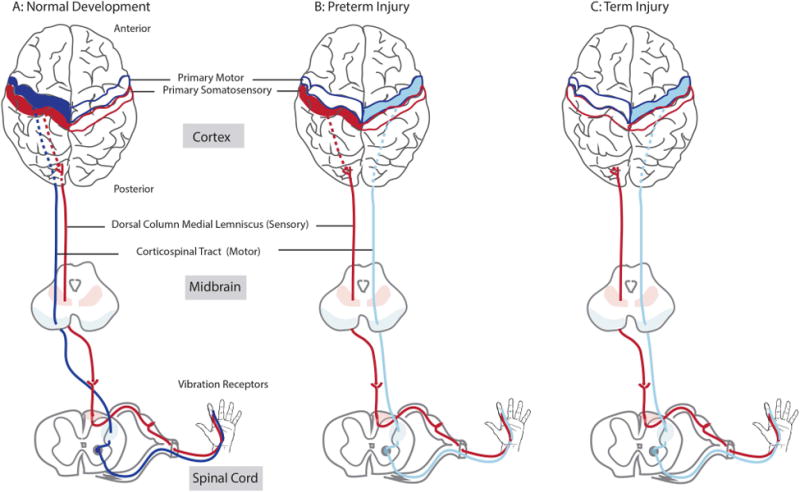Figure 1.

An illustration of the motor and somatosensory connections in normal development and early brain injury. These are models based on previous studies of the effects of injury timing on connectivity. (A) Typical development. After initial bilateral projections, the motor tract (corticospinal tract (CST), is largely pruned to the contralateral one. The somatosensory tract mediating touch, vibration, and proprioception (dorsal column-medial lemniscus (DC-ML)). (B) In case of preterm injury, the contralateral CST is often disrupted, and the ipsilateral CST persists from the uninjured hemisphere. Thalamocortical projections (interrupted line) that are part of the DC-ML develop later and may skirt periventricular lesions to reach primary somatosensory cortex in the contralateral cortex. (C) In case of a larger injury (such as MCA) that can often occur at full term, the thalamocortical projections and primary somatosensory cortex may be disrupted as well. (Colored version of Figure is available online)
